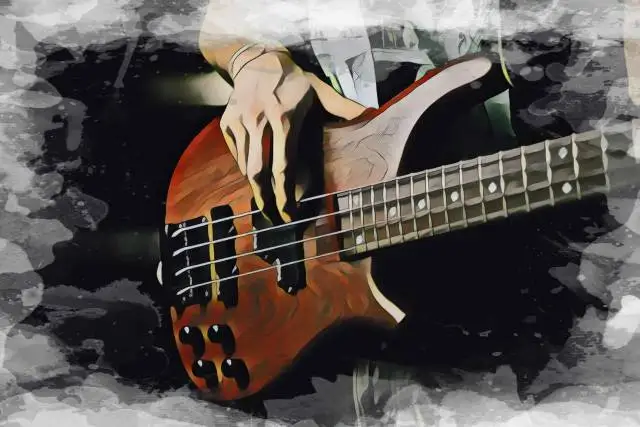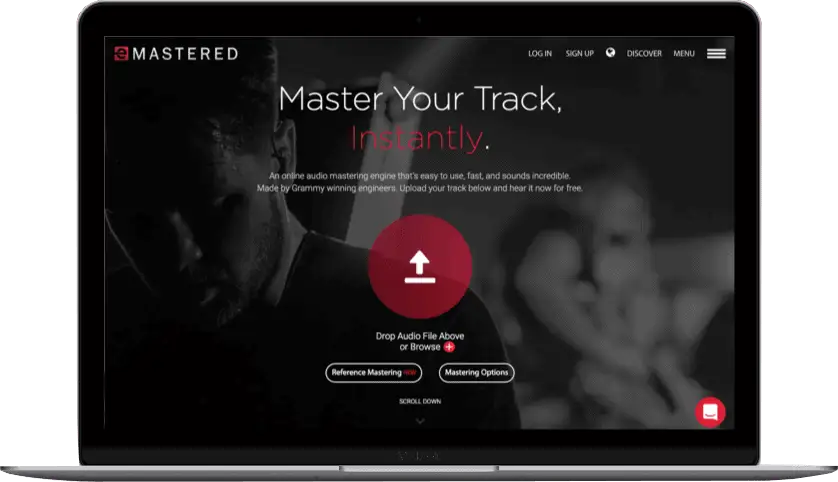Bass guitars are often the unsung heroes of music production. An engaging bassline can turn your track into a hit, enhance your rhythm section and push the song forward. It's the musical instrument that ties it all together, connecting all the other instruments into a cohesive and powerful soundstage.
Every instrument has its own set of rules when recorded, and bass guitar is no different. With its deep low end and pulsating vibe, the bass guitar needs to subtly find its place in the mix, without taking the spotlight while also becoming an integral part of the song.
Sounds complicated, right?
Actually, recording a bass guitar is relatively simple, so long as you’re familiar with the tools you have at your disposal, and you know how a full-sounding bass guitar sounds like.
There are a few different methods you can try out, and in this article, we’ll go over them one by one, explaining the pros and cons of each approach.
Let’s dive in!
Why Is It Different from Recording a Guitar?
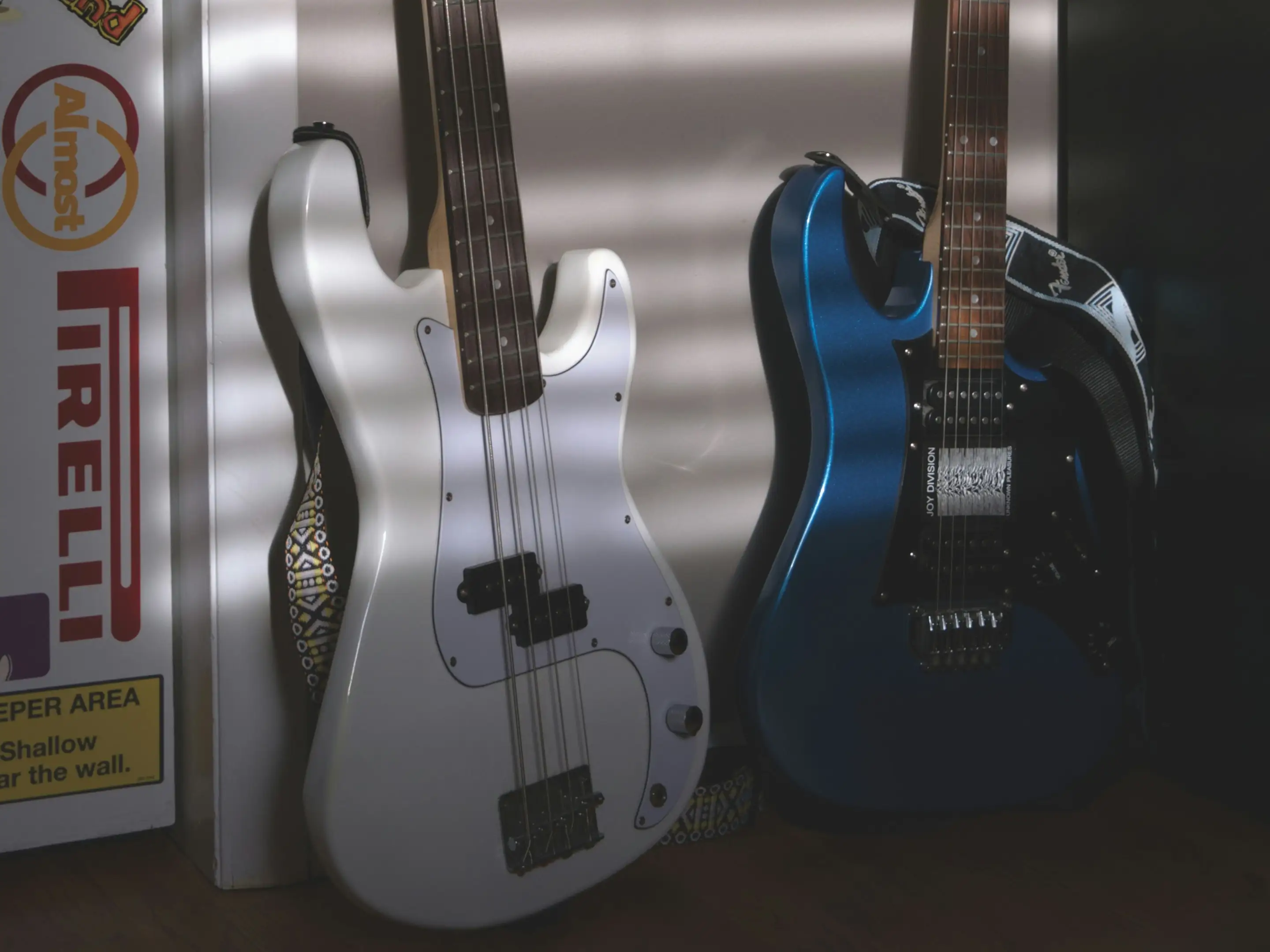
There are quite a few differences between recording a guitar and a bass guitar.
First of all, a bass guitar is often recorded using a DI box, which allows you to capture a clean signal and makes it easier to add amp effects later on. We’ll talk more about this later, but for now, just know that this is the most straightforward way to record a bass guitar, and also one that offers more sound customization options during production.
For guitars, on the other hand, we usually put a microphone in front of an amplifier, which gives you a richer sound and also allows you to record in stereo to make the music feel wider. While you can plug your guitar straight into an audio interface and record a clean sound, that usually takes away part of the sonic palette created by the combination of guitar, amp, and effects, especially if the guitarist uses analog equipment.
Speaking of which, when recording bass, you should do it in mono to avoid phase issues that can come up with stereo recordings. Sound engineers often use close-miking to enhance the low sounds since the mic is close to the source. Guitars can also be close-miked, but that’s more of a creative choice rather than a necessity.
All in all, I think bass recordings are not necessarily easier to handle than guitars', but having fewer options at your disposal makes the process more straightforward. Let's take a look at the three approaches you can take when recording bass.
Option 1: Recording Bass with Your Audio Interface
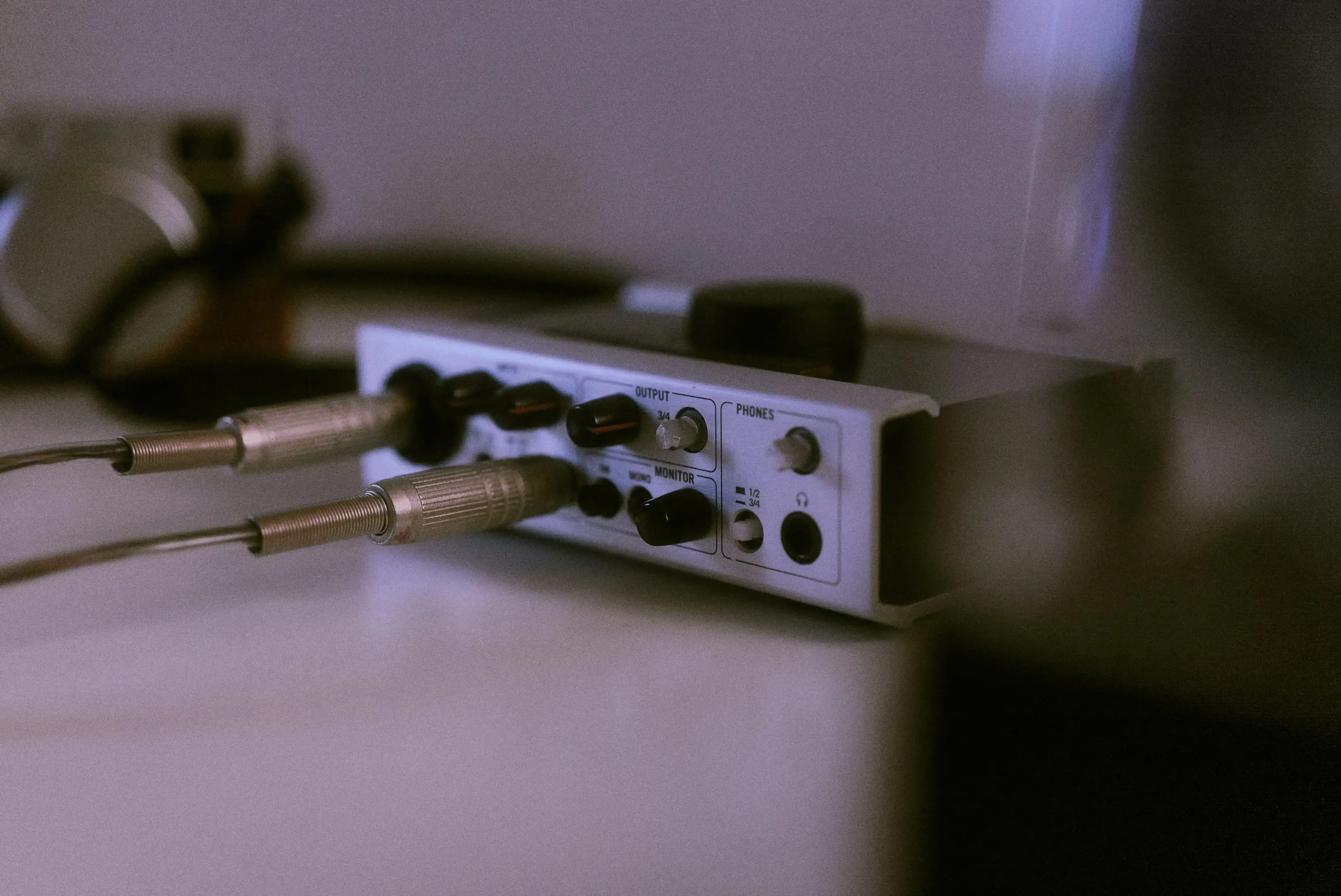
The simplest way to record a bass guitar is to connect it directly to an instrument input on your audio interface. This technique is known as DI, which stands for Direct Injection, and works magnificently across genres.
By recording bass directly into the interface, you can fully customize your sound through your DAW, applying amps and bass effects to create your sound signature. It's also by far the best option for tracking bass.
Just remember to activate the 'Inst' button to enable the Hi-Z circuitry before recording. Most modern interfaces feature dedicated Hi-Z inputs for line-level instruments like bass or electric guitar, or they have combo XLR/TRS/TS jacks for instrument cables.
Needless to say, the quality of your interface's mic preamps will have a huge impact on the signal's loudness and noise levels. Low-quality preamps will introduce unwanted noise, and there may be hum from the bass pickups that will compromise the quality of your recordings.
In short, if you record straight to the DI, your audio interface is the critical tool, so make sure it's high-quality enough to preserve the natural tone of your instrument, without adding unwanted noise or coloration.
Option 2. Recording A Bass Amplifier with a Microphone and an Amp
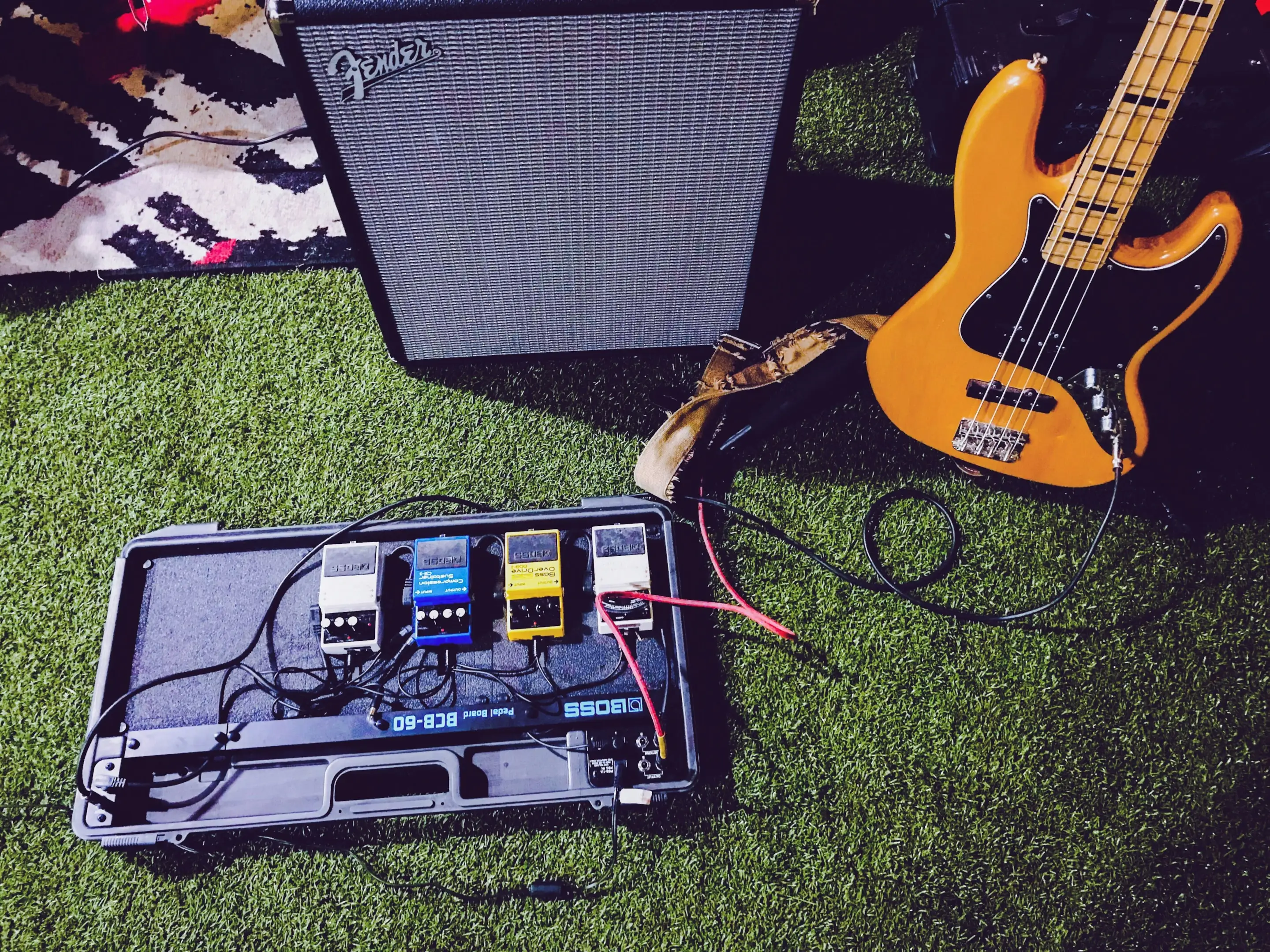
If you have the option to record a powerful bass amp at home, go for it. You won’t regret it.
While recording at full volume is often hard in a home recording studio, high-quality audio interfaces these days come with microphone preamps that can amplify a lower-level signal without causing unwanted noise. But if you can push the volume, that's definitely the most enjoyable approach for a realistic sound!
The way to position a microphone to record a bass amp is not unlike electric guitar amps: placing it directly at the speaker cone creates a brighter tone, while you get a darker sound if you place it on the side.
For bass guitar, dynamic mics are the standard option: they’re heavy-duty mics that can manage high volumes and the airflow from bass amps relatively easily. Just keep in mind the proximity effect, as you already have a lot of low-end to work with.
All in all, microphones that work well with kick drums can also do a fantastic job with bass amps.
Option 3. Recording Bass with a Mic and DI Simultaneously
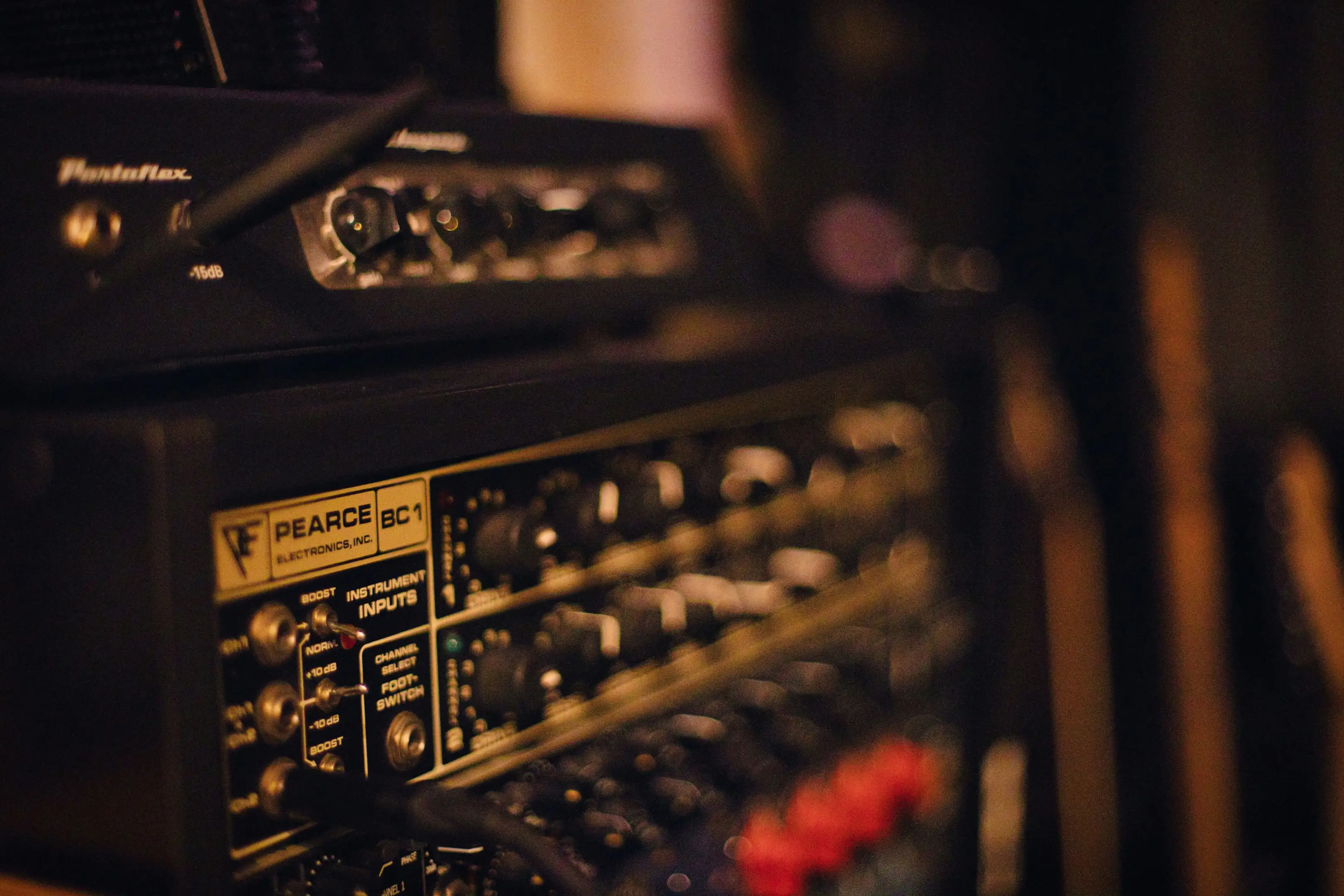
A DI box can split the audio signal, meaning you can simultaneously record the tone of your bass amp and a clean and unprocessed signal that you can use for reamping later.
If your setup permits, this is a great option. If you want to capture the authentic sound of your bass guitar, while also having the option to customize your sound signature in post-production, this recording technique offers the perfect way to combine a raw sound with a fully customizable one.
Having access to both the amplified tone and the clear DI signal gives you the freedom to explore different options, without sacrificing your sound signature. So do give it a try if you have the chance.
How To Get the Right Bass Tone
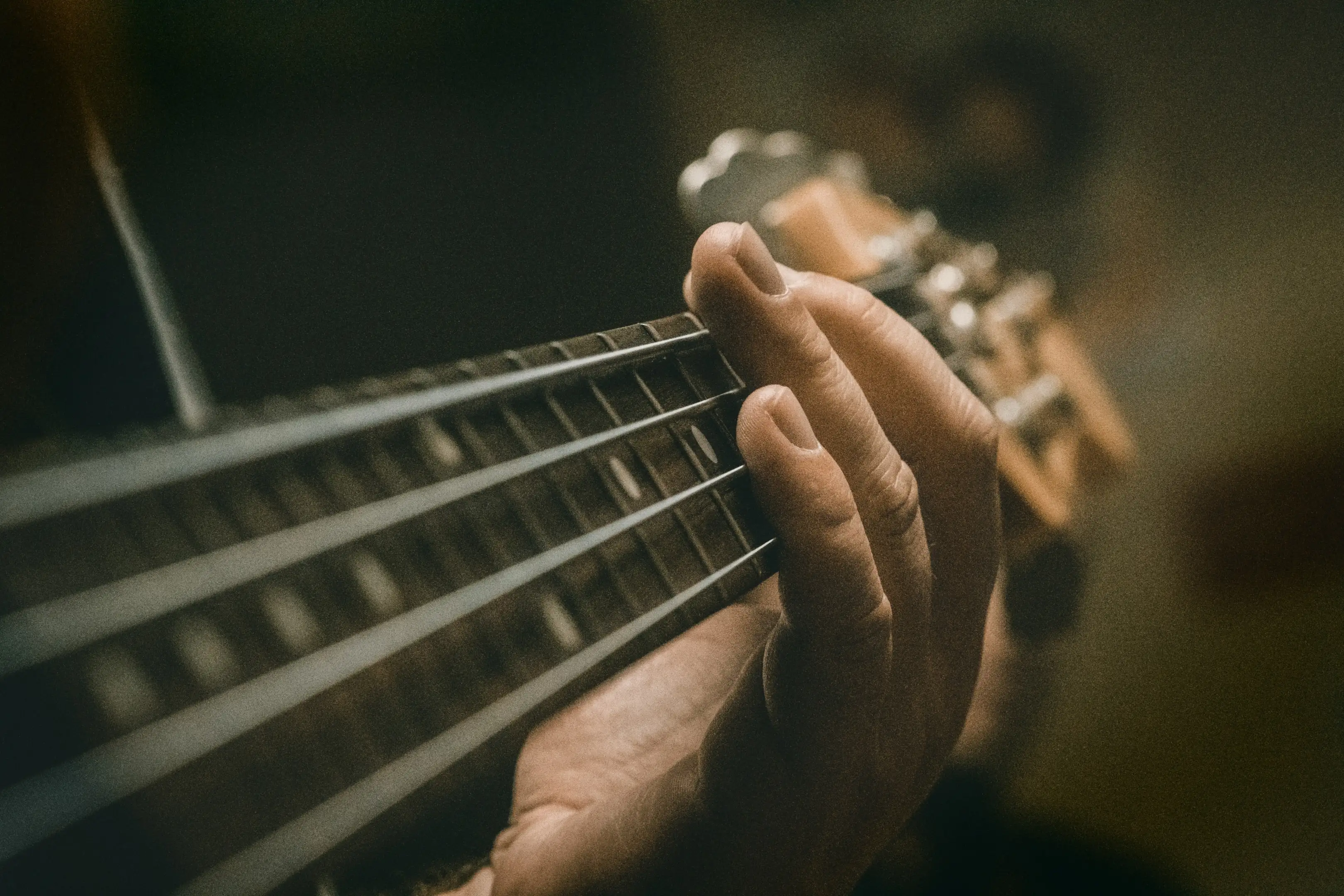
Knowing how to record a bass guitar doesn't necessarily mean you'll be able to create a professional-sounding mix. As is the case with all instruments, the ability to create a unique sound signature is what will make your bass guitar truly stand out in the mix.
So now that you know how to record a bass guitar, let’s take a look at how you can make your instrument sound professional and unique.
In my experience, it’s all about EQing, at least at first. A bass guitar amplifier, be it a real amp or an amp simulator, comes with an EQ you can use to control the volume of multiple frequency ranges, usually bass, midrange, and treble.
If your bass guitar sounds muddy, you’ll need to understand which frequencies are clashing and how to adjust them accordingly. The most common cause of a muddy sound is that there’s no frequency “hierarchy”: you’re boosting too many frequencies at the same time and the result is an unclear, low-end mess. Drastic boosts can create more problems than solutions, especially with bass, which is all about subtlety.
If your tone sounds thin or weak, try to increase the low end or cut back on the treble. Too much midrange can also thin out your sound by overshadowing low-end frequencies, so try to highlight lower frequencies by removing mids, and see if the sound is fuller.
When you adjust EQ, start from all levels flat (0), then make small tweaks to try to improve your tone. As a rule of thumb, it's better to cut a frequency rather than boost another when you need to make changes.
A multiband compressor is your best bet if you're having issues with muddy mixes. The compressor will help you refine the sonic palette of your bass guitar, enhancing or mitigating frequencies when needed. Used in combination with an EQ, a compressor can bring professional results to life.
Plus, it'll make your bass sound louder while maintaining the same peak level. That's because, by being selective with the frequencies you want to enhance, you'll create a fuller mix that'll sound loud on all frequency levels.
Try to set the compressor's attack time to a few tens of milliseconds, so that the initial burst of sound comes through without being compressed. As for the release time, a quarter of a second is usually a good option, but keep experimenting until you find your sweet spot.
When recording a new band, this is my usual approach to shaping the bass guitar's tone. To achieve a powerful and crisp sound, I often cut the midrange frequencies while boosting the bass and treble. This technique makes the bass punchy and works really well for slap bass.
If you can adjust the low mids, usually around 250-500 Hz, try to boost them to enhance the bass presence. This trick should help you blend the bass guitar with the rest of the band, without overshadowing any other element of your mix.
Finally, sometimes you can just leave the bass guitar sound as is. Leaving the frequencies untouched can bring to life a clear and deep sound, and also give your recordings a more natural feel.
Layering and Doubling Bass
There are times when using just one bass track isn’t enough to enhance the low end of your song. That's when adding another bass track makes sense, as it will reinforce your low end and make it stand out better in the mix.
One easy way to do this is by layering your recorded bass with a synthesized bass. This works especially well in genres like EDM, pop, or hip-hop, where deep bass is important.
To do this, simply copy your bassline and use a synth with a strong low-end sound, like a sine or square wave, blending it under your original bass track. Make sure to low-pass the synth so it only enhances the deep frequencies without overshadowing your main bass.
Another great technique is parallel distortion. You duplicate your bass track, add some distortion or saturation to the copy, and then mix it back in with the clean sound. This will give your bass the character of a distorted tone while keeping the low-end nice and clean.
Finally, there's split-frequency processing. Same as before, you duplicate your bass track and use filters to separate the high and low frequencies. You can then process each part separately; for example, you can add distortion to the highs while compressing the lows to keep them powerful and consistent. This gives you better control over how each part of the bass sounds in the mix.
Using Effects on Bass
Effects on the bass guitar can drastically improve the sound of your instrument, so long as you use them wisely and subtly.
Saturation and overdrive are two of the most common effects used for bass because they add extra sound layers and make the bass stand out in a busy mix. They're a great way to add depth to your sound, but make sure you don't overdo it, as you might sacrifice the instrument's clarity.
Chorus and flanger effects can also create a nice sense of space or movement around your bass sound. These two shine in genres like funk, pop and synthpop, or ambient music, but once again, overdoing it can make the bass sound messy.
Personally, I'd avoid reverb. The low frequencies can get lost in the echo, but if you do want to add a bit of space, try applying reverb to the higher frequencies instead, or use very short, subtle ambient effects.
Final Thoughts
Getting a good bass sound requires plenty of trial and error, and your role as a producer is to explore every viable option to make an electric bass sound great.
Pick the recording technique that best suits your skills and equipment. Recording a bass part straight into the DI makes your life easier and your neighbors happy, but you might lose the sound signature of an amp that makes a bass tone unique.
Still, I recorded many albums with the bass plugged straight into the audio interface, and it usually sounds great.
You can even record a bass sound without an actual bass guitar. Simply use a MIDI keyboard and a bass emulator, which most DAWs come with these days. It's a cost-effective solution, but don't expect miracles: removing the real instrument and the bass player from the equation will make your song sound more artificial.
As long as you make the most of what music production techniques offer these days, you'll be able to find your own sound signature, and make your bass guitar shine in the mix.
Have fun!


